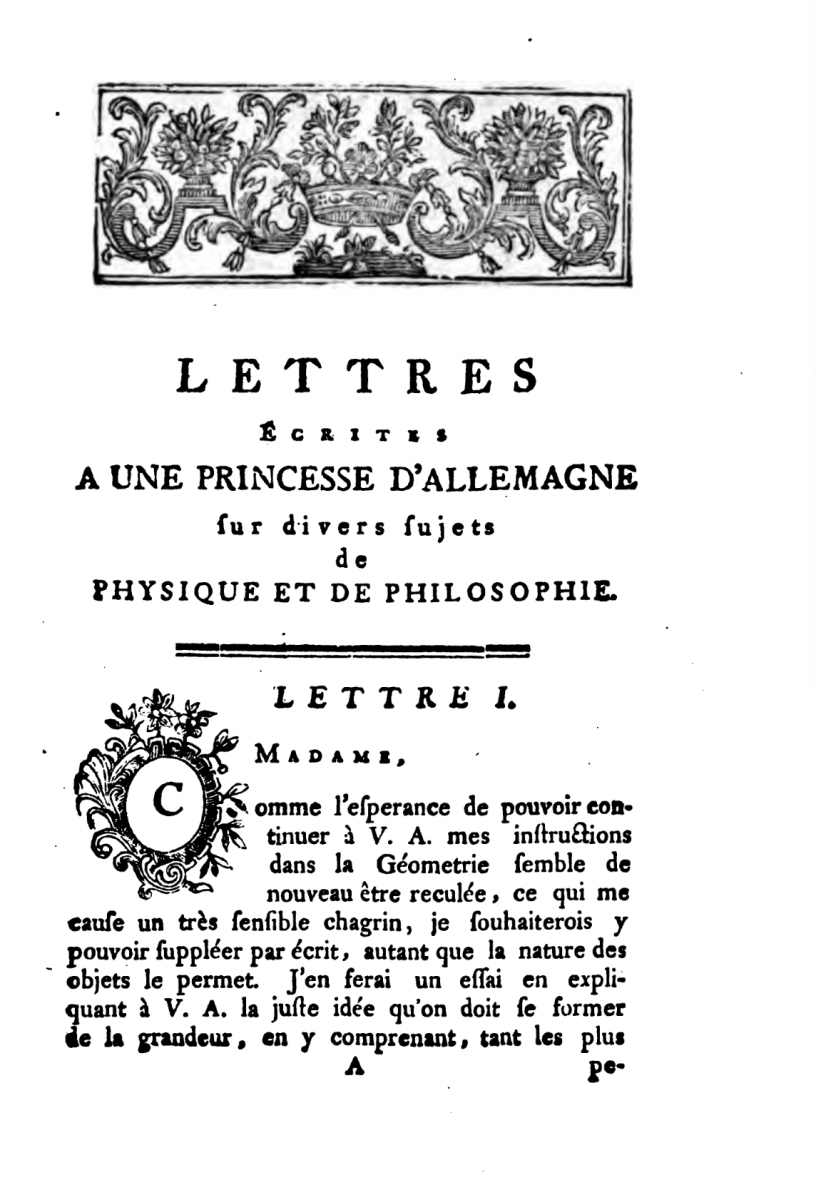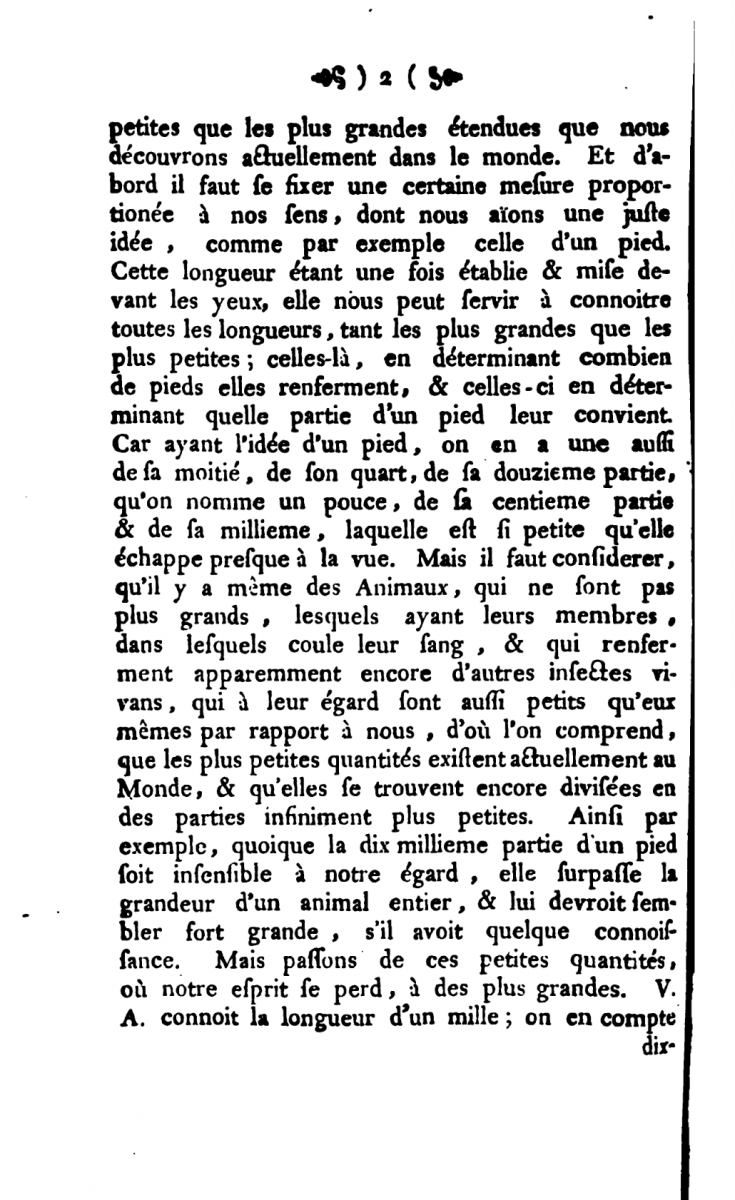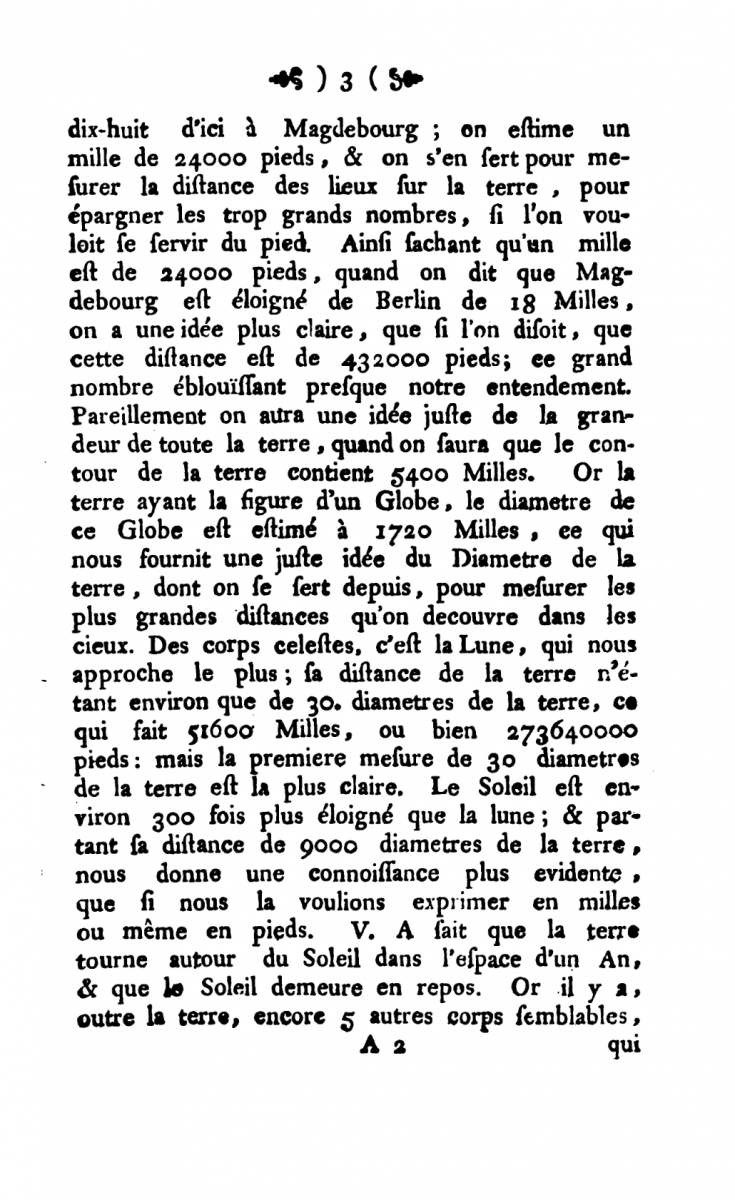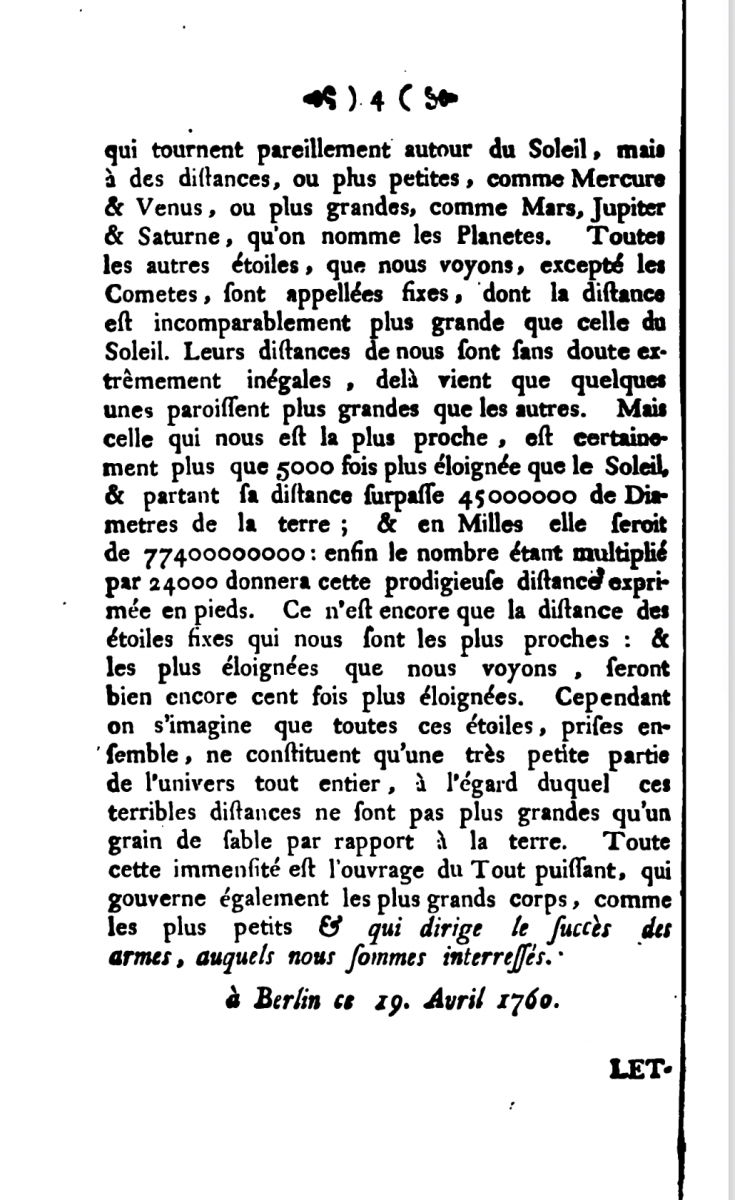- About MAA
- Membership
- MAA Publications
- Periodicals
- Blogs
- MAA Book Series
- MAA Press (an imprint of the AMS)
- MAA Notes
- MAA Reviews
- Mathematical Communication
- Information for Libraries
- Author Resources
- Advertise with MAA
- Meetings
- Competitions
- Programs
- Communities
- MAA Sections
- SIGMAA
- MAA Connect
- Students
- MAA Awards
- Awards Booklets
- Writing Awards
- Teaching Awards
- Service Awards
- Research Awards
- Lecture Awards
- Putnam Competition Individual and Team Winners
- D. E. Shaw Group AMC 8 Awards & Certificates
- Maryam Mirzakhani AMC 10 A Awards & Certificates
- Two Sigma AMC 10 B Awards & Certificates
- Jane Street AMC 12 A Awards & Certificates
- Akamai AMC 12 B Awards & Certificates
- High School Teachers
- News
You are here
Euler's Letters to a German Princess: Translation and Betrayal – The First Letter
In order to gain insight into Euler’s approach to this informal pedagogical relationship with a fifteen-year-old female student from the nobility, we will explore the first letter: “l’Entendue” (“Magnitude” or “Size”). In the first sentence, Euler promised to produce “examples of the smallest as well as the greatest extensions of matter actually discoverable in the system of the universe” [Euler 1795, p. 1]. After describing some distances relevant to daily life in the eighteenth century, Euler expanded his view to include Earth itself:
We shall have a tolerably just idea of the magnitude of the earth, when we are told that its circumference is about 5,400 miles. And the diametre being a straight line passing through the centre, and terminating, in opposite directions, in the surface of the sphere, which is the acknowledged figure of the earth, for which reason also we give it the name of globe, the diameter of this globe is calculated to be 1720 miles [Euler 1795, p. 3, emphasis in source].


Figure 3. First two pages of Euler’s first letter to Princess Friederike Charlotte. Euler Archive.
Two things in this passage are worthy of our notice. First, Euler had chosen to measure distances in German miles, which are about 4.7 times as long as their English cousins. Thus, the circumference reported in this letter is approximately 25,380 miles (40,845 km), an overestimate of about 2%. Second, the Earth is not shaped like a sphere, and Euler knew this well. Two teams of scholars, organized by Pierre Louis Moureau de Maupertuis, had undertaken long voyages to Lapland and South America in the 1730s in order to measure a degree of longitude. Euler was among those who used their measurements to calculate that the Earth was wider at the equator than at the poles, confirming a prediction of Newtonian physics [Euler 1738]. Euler resisted the temptation to tell this story here, sticking instead to a gentle fiction that furthered his goals in the letter. Once he established the diameter of the Earth as a unit that could be used to make other distances easier to understand, Euler proceeded to discuss the distance to the moon and the sun:
Of all the heavenly bodies the moon is nearest us, being distant only about 30 diameters of the earth, which amount to 51,600 miles, or 1,238,400,000 feet; but the first computation, of 30 diameters of the earth, is the clearest idea. The Sun is about 300 times farther from us than the moon; and when we say [its] distance is 9,000 diameters of the earth, we have a much clearer idea, than if it were expressed in miles, or feet [Euler 1795, p. 4].
Euler moved next to the rest of the solar system, giving the distance to the sun and naming the planets. This section is particularly interesting in the most widely-distributed printing of Henry Hunter’s 1795 English translation, in which Euler is presented as having written:
Besides the Earth, there are ten other similar bodies, named planets, which revolve round the sun; two of them at smaller distances, Mercury and Venus; and eight at greater distances, namely, Mars, Ceres, Pallas, Juno, Vesta, Jupiter, Saturn, and the Georgium Sidus [Euler 1823, p. 31, emphasis in source].
I have seen this list mentioned in many places. The careful reader should wonder, however, just how Euler predicted some of these "planets"—particularly Ceres (1801), Pallas (1802), Juno (1804), Vesta (1807), and the so-called Georgium Sidus (1781)—since none but the largest would be discovered until many years after Euler's death in 1783. The short answer, of course, is that he didn’t! The long answer is more interesting. Explaining what Ceres etc. are doing in this translation requires understanding how and why the Letters to a German Princess were translated in the first place.


Figure 4. Last two pages of Euler’s first letter to Princess Friederike Charlotte. Euler Archive.
Dominic Klyve (Central Washington University), "Euler's Letters to a German Princess: Translation and Betrayal – The First Letter," Convergence (December 2020)




